|
|
|
|
|
|
|
|
|
|
|
|
|
|
|
|
|
|
|
|
|
|
|
|
|
|
|
|
|
|

|
|
|
|
|
|
|
|
|
|
|
|
|
|
|
|
|
|
|
|
|
|
|
|
|
|
|
|
|
|

SOURCE: Windermere
Every component of your home has a lifespan. Common questions asked by homeowners include when to replace the flooring or how long to expect their siding to last. This information can help when budgeting for improvements or deciding between repairing and replacing when the time comes. We’re all familiar with the cliché: They just don’t build things like they used to. And while this may be true when it comes to brick siding or slate roofing, lifespans of other household components have increased in recent years. Here are the life expectancies of the most common household items (courtesy of NAHB):
Among major appliances, gas ranges have a longer life expectancy than things like dishwashers and microwaves.

When choosing your countertops, factor in the life expectancies of different materials.
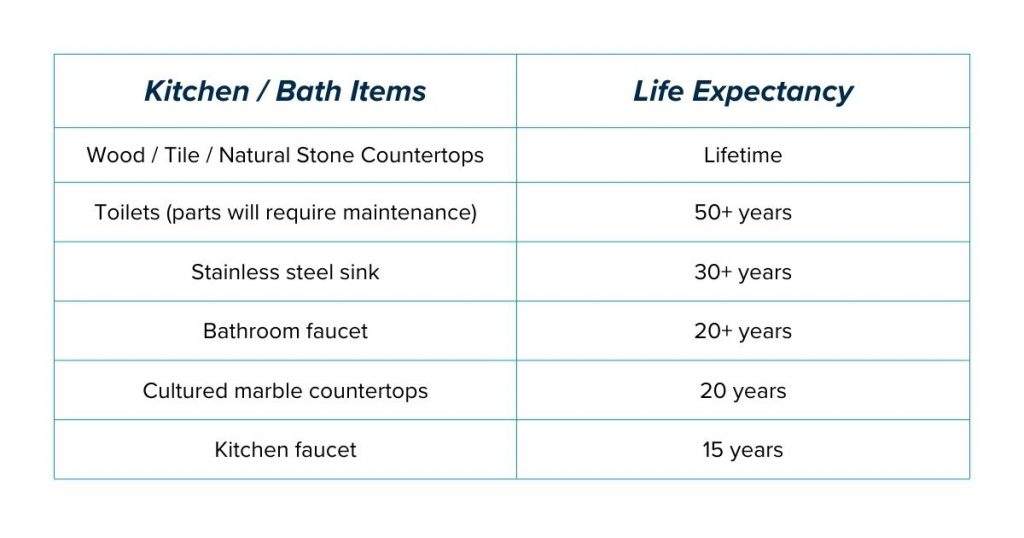
If you’re looking for longevity, wood floors are the way to go. Certain rooms in your home will be better suited for carpeting, but you can expect they’ll need replacing within a decade.
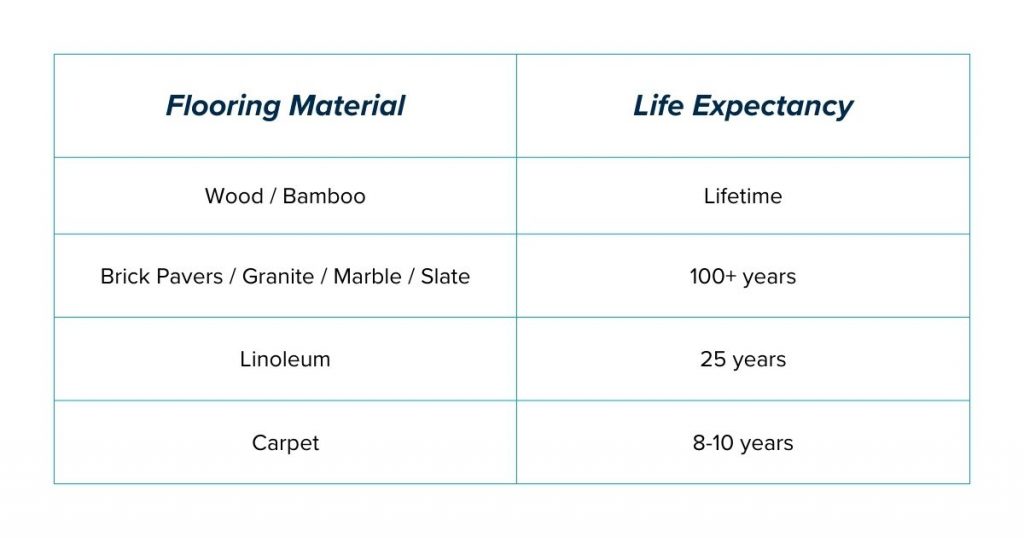
When choosing roofing and siding for your home, climate and maintenance level factor into the life expectancy of the material. However, brick siding and slate roofing are known to be dependable for decades.

Extended warranties, also known as service contracts or service agreements, are sold for all types of household items from appliances to electronics. They cover service calls and repairs for a specified time beyond the manufacturer’s standard warranty.
You will have to consider whether the cost is worth it to you. For some, it brings a much-needed peace of mind when making such a large purchase. Also consider if the cost outweighs the value of the item. In some cases it may be less expensive to replace a broken appliance than to pay for insurance or a warranty.
SOURCE: Windermere
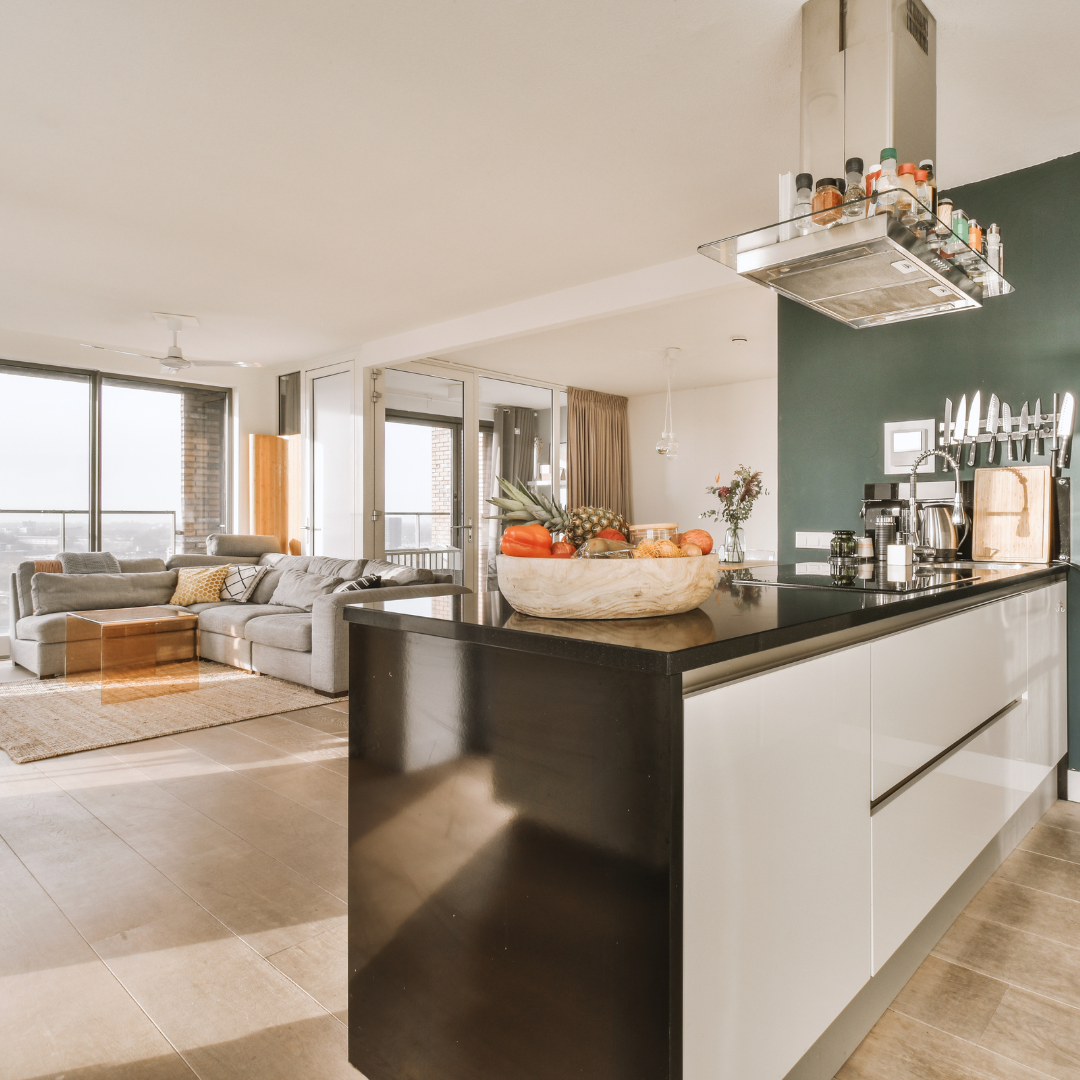
SOURCE: Windermere
The benefits of staging a home are well documented. Numerous studies show that staging helps sell a home faster and for a higher price. Studies also indicate that buyers decide if they’re interested within the first 30 seconds of entering a home. Not only does home staging help to remove potential red flags that can turn buyers off, it also helps them imagine living there. Homes that are professionally staged look more “move-in ready,” which makes them far more appealing to potential buyers.
If you’re ready to put your house on the market and want to try your hand at staging, here are some concepts to keep in mind:
Make the inside match the outside. For example, if the exterior architectural style of your house is mid-century modern, the interior should be primarily outfitted with mid-century modern style furniture. Prospective buyers who like the exterior style of your home are going to expect something similar when they step inside. If the two styles don’t agree or at least complement each other, there is likely going to be an immediate disconnect for the buyer.
There is always room for flexibility. Not all your furnishings need to match, and even the primary furnishings do not need to be an exact match to the architectural style of your home. To create cohesion, you simply need to reflect the overall look-and-feel of the exterior.
Every home is a personal expression of its owner. But when you become a seller, you’ll want to look for ways to make your home appeal to your target market. Keep in mind, your target market is made up of the group of people most likely to be interested in a home like yours—which is something your agent can help you determine.
A good strategy to staging your home is to “neutralize” the design of your interior. A truly neutral interior design allows people to easily imagine their own belongings in the space—and to envision how some simple changes would make it uniquely their own.
Paint over bold wall colors with something more neutral, like a light beige, warm gray, or soft brown. The old advice used to be, “paint everything white,” but often that creates too sterile of an environment, while dark colors can make a room look small, even a bit dirty. Muted tones and soft colors work best. Likewise, consider removing wallpaper if it’s a bold or busy design.
Lighting is key. Replace heavy, dark curtains with neutral-colored shear versions; this will soften the hard edges around windows while letting in lots of natural light. Turn on lamps, and if necessary, install lighting fixtures to brighten any dark spaces—especially the entry area.
To further inspire buyers to imagine the space as their own, make sure every room—including closets and the garage—is clean and clutter-free. You may even want to hire professionals to give your home a thorough deep clean. Remember, the kitchen and bathrooms are by far the two most important rooms in a house when selling, so ongoing maintenance is important.
Family photos, personal memorabilia, and collectibles should be removed from the home for your safety. Closets, shelves, and other storage areas should be mostly empty. Work benches should be free of tools and projects. Clear the kitchen counters, store non-necessary cookware, and remove magnets from the refrigerator door.
The same goes for furniture. If removing a chair, a lamp, a table, or other furnishings will make a particular space look larger or more inviting, then do it.
You don’t want your home to appear cold, un-loved, or unlived-in, but you do want to remove distractions and provide prospective buyers with a blank canvas of sorts. Plus, de-cluttering your home now will make it that much easier to pack when it comes time to move.
If you’re concerned about the additional cost of staging, rest assured. Even a relatively small investment of time and money can reap big returns. There are even things you can do yourself for little to no cost. Contact your agent for advice on how to stage your home most effectively or for a recommendation on a professional stager. While the simple interior design techniques outlined above may seem more like common sense than marketing magic, you’d be surprised at how many homeowners routinely overlook them. And the results are clear: staging your house to make it more appealing to buyers is often all it takes to speed the sale and boost the sale price.
SOURCE: Windermere
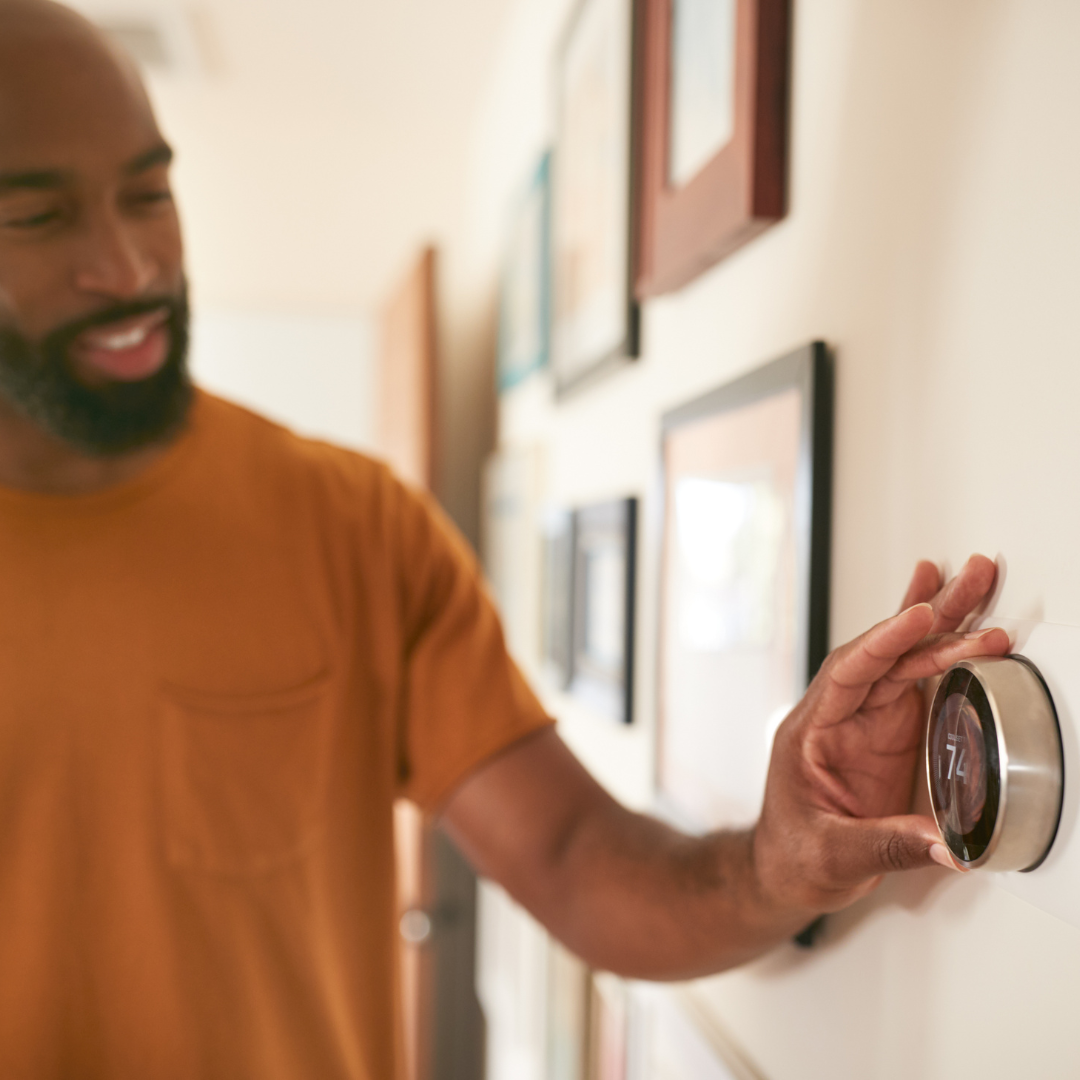
SOURCE: Windermere
There are plenty of good reasons to make your house a little greener, including saving money on energy expenses and ensuring a more livable planet for future generations. No matter what your motivation, making eco-friendly changes doesn’t have to be a daunting proposition.
The following relatively simple tips will help to not only reduce your carbon footprint to realize savings but also bring the peace of mind that comes from making smart choices for the environment.
For many homeowners, the highest utility expense is the water bill. We all know that taking shorter showers and only running the dishwasher when it’s full can help reduce water usage, but there are other ways to find savings.
If you are an ardent gardener, collect water in a rain barrel during the wetter months to use on plants and yards when outside temperatures go up. Installing a low-flow or dual-flush toilet (or retrofitting your existing toilets) can also reduce the amount of water that goes down the drain.
If your appliances—including your washer and dryer, refrigerator, water heater, or television—are more than ten years old, buying new ones could be all it takes to save money.
For an even bigger bang for your buck, invest in Energy Star appliances. To be certified as Energy Star, appliances must meet strict standards for energy efficiency set by the Environmental Protection Agency (EPA). The upfront cost of these products can be a little heftier than other appliances, but rebates and federal tax credits can help offset that initial expense.
Many thermostats have a scheduling feature to help manage your heating and cooling. This can be helpful if you have a consistent daily routine of when you will be home and out of the house to save energy during the hours when you’re away or asleep.
You can now find thermostats that meet the EPA’s criteria for energy efficiency. Energy Star smart thermostats are Wi-Fi-enabled and give you better control over the heating and cooling of your home. Many of these options have apps on your smartphone that give you the power to adjust from your fingertips. And over time, they can learn your preferences, including times you are away from home and when you sleep, to improve efficiency. They can also provide insight into your energy usage so you can make adjustments yourself for optimal performance.
Trees not only suck carbon dioxide out of the atmosphere while producing the oxygen we need for fresh air, but they also provide shade for homes in the summer months, which can cut down on the time you need to run an air-conditioning unit or the AC function of your HVAC system. Plant trees on the south and west side of your home for the best results. Trees that shed their leaves in the fall can provide mulch for your yard or garden, thus reducing the amount you’ll need to water them in the summer and fall.
SOURCE: Windermere

SOURCE: Windermere
This year we’re celebrating the 35th anniversary of the Windermere Foundation, the non-profit arm of Windermere Real Estate. Since 1989, agents and offices across our network have given back to the communities where Windermere operates. We’ve raised over $53 million and supported thousands of our neighbors in need throughout the Western U.S.
Last year the Windermere Foundation donated $3.7 million to 607 non-profit organizations dedicated to assisting low-income and homeless families. Donations provided emergency assistance, supported youth programs, food support, and shelter.
Our 2023 Community Impact Report outlines our efforts and is available to download and read here.
To start off 2024 on the right foot, our offices in Spokane, WA, and Lake Oswego, OR are doing their part to support low-income and homeless families in their communities through grants and fundraising events.

Image Source: Windermere Spokane
In their annual grant review, Windermere Spokane considered 32 applications for their 2024 Windermere Foundation donations and were able to grant funds to 11 organizations. While they were able to support a handful of organizations they have donated to previously, they were able to add some new non-profits to their list, including Thrive International.
The stories submitted by Thrive about their temporary housing for refugees struck a chord with a group of Windermere Foundation representatives who come from seven Spokane-area Windermere offices. The funds will help refugee families access housing in a moment when shelter is so important. In addition to temporary housing, Thrive also offers education and empowerment programs to residents, which have helped lead so many into further housing and successful transitions as immigrants to the greater Spokane area. Read on for a story about Yuliia, a Ukrainian refugee who was assisted by Thrive.

Image Source: With Permission from Thrive International and Windermere Spokane
Yuliia is from Ukraine. She unexpectedly started her journey to come to the United States in May of 2022, just three months after the Russian-Ukrainian war started. Initially, leaving her homeland was not a part of Yuliia’s plans. However, when bombs blasted in her city, she made the difficult decision to seek a secure haven for her family.
“Everything was so good. My life was good before everything happened,” said Yuliia. She was a hardworking administrative manager at a company in Ukraine. Yuliia and her husband had just bought their first home; however, their lives took an abrupt turn when their city became a danger zone, leading them to sell their car to afford flights for their journey to the United States in pursuit of refuge.
Arriving in the U.S. with little more than the clothes in their suitcases, Yuliia faced the daunting challenge of rebuilding her life from scratch. She said, “When we came here, we didn’t have anything. We didn’t have money. We didn’t have any documents. It just looked like we were starting from zero.”
Amidst linguistic and cultural barriers, Yuliia discovered Thrive Center in June, becoming one of its first residents. With the support of Thrive staff, she found not only employment but also a community where she could make connections with other Ukrainian refugees and get help with medical insurance, workshops, and educational resources. Starting as a front desk assistant at a dental clinic, Yuliia’s journey has come full circle as she now serves as the Assistant to the General Manager at Thrive Center.
Expressing gratitude for the opportunities she’s been given, Yuliia finds joy in empowering others to thrive. Yuliia’s story shows resilience and hope amidst adversity. From the once-thriving administrative manager in Ukraine to the unexpected refugee seeking safety in the United States and helping others at Thrive Center, her journey is a testament to the strength of the human spirit.
Stories like Yuliiua’s inspired the Windermere team reviewing applications to fulfill the grant with their available Windermere Foundation funds.
Emma Reeves, with the Windermere Foundation in Spokane, said, “we are excited to continue working with Thrive in the future to ensure that having a ‘home’ is a possibility for all.”

Image Source: Windermere Lake Oswego
The agents at the Windermere office in Lake Oswego, OR hosted their 27th annual Sally Knauss Tulip Sale in March. Named for the Realty Trust agent who started it, who has since passed away, the tulip sale culminated in an order for 8,000 tulips from Wooden Shoe Tulip Farm, which were used to create 800 bouquets.
“Rain or shine each year [our office] is happy to enable this iconic event,” said Valerie Ross, Principal Broker at Windermere-Lake Oswego
Taking shifts from 8am to 1pm on Friday, March 29, fifteen Windermere agents volunteered for the cause, which raises money for the office’s Windermere Foundation fund. Donations from the sale allow the office to support local non-profits throughout the year. This year’s sale raised $5,800 which will go to one or more of their favorite organizations, like Clackamas County Women’s Shelter, Bridge Meadows, New Avenues for Youth, and Friends of the Children.
SOURCE: Windermere

|

SOURCE: Windermere
As you prepare to sell your house and move to a new one, you may be taking a fresh look at your belongings. You might be wondering how they’ll work in the new home or if you’ll need to upgrade to new ones. If you’re staging your current home and need to declutter, you are probably considering which items you can live without. A yard sale is a great way to get rid of old items, reduce what you have to move with you, and make room for the new. Here are some tips to make your yard sale a success.
A good rule of thumb when deciding what you want to sell is, if you haven’t used it in more than a year, get rid of it. This doesn’t hold true for keepsakes and heirlooms, but if it’s not sparking joy and it’s been in storage for a year or more, add it to the “for sale” pile.
Consider contacting your neighbors to coordinate having one large neighborhood sale on the same day. This will help attract more buyers. Have each participating household pitch in a few bucks for signage you can post around the area directing people to your sales. When the buyers have left and you’re finished packing up, bring out the grills and make it a block party!
Helpful hint: check your local laws or HOA rules to see if you need permits for a community sale or outdoor party.
If you have kids and they want to sell some of their things, have them help by putting price stickers on their items or, depending on their age, making change when people pay for their purchases. If you aren’t selling children’s items but you have young ones who still want to be involved, help them set up a lemonade stand or host a small bake sale.
Create a Facebook event page and invite all your friends. Tweet about it and create a fun hashtag, then offer a prize to those who repost about your sale. Post a carousel of the images for sale on Instagram. Use Nextdoor or another neighborhood app to invite people you may not know in other neighborhoods. Whatever old knick-knacks you may uncover are sure to be a hit for somebody, and spreading the word of your sale beyond those who are nearby will help them find you.
Not everyone carries cash these days. If you offer them the ability to pay via PayPal, Venmo, Zelle, or another peer-to-peer payment platform, you’ll make more sales. You’re also more likely to turn passers-by into buyers, especially if they are walking or on a bicycle and aren’t carrying their wallet.
Decide which, if any, big-ticket items you will not haggle over, and then be willing to adjust your prices and leave room for some friendly negotiation for everything else. The idea is to get rid of things—not get rich.
After your sale is over, do not put the leftovers back in your house, garage, or storage. Immediately box or bag them up and drive them to your local Goodwill, Salvation Army, or other donation center. That way, there is no chance of procrastination, second guessing, or keeping things you do not need.
SOURCE: Windermere

|
|
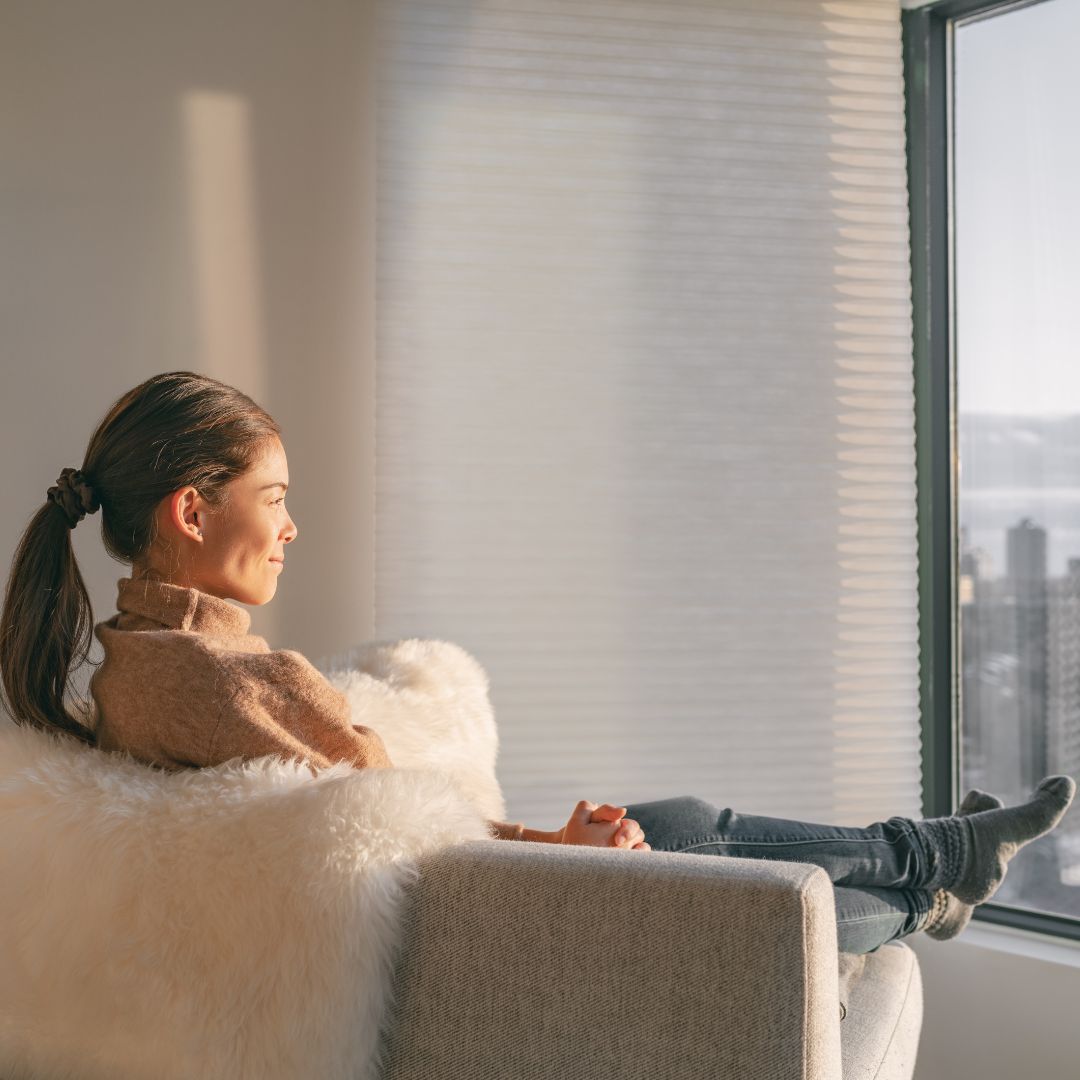
SOURCE: Windermere
The meaning of home has expanded over the years, adding new activities beyond eating and sleeping. For many this means home has more space to work and do hobbies. But as those things expanded, the feeling of relaxation may have dwindled, and for those struggling with the mental health implications of this, creating a space in your home that is dedicated to reducing stress could be the ticket to achieving a sense of peace and calm. Whether you use that space to meditate, exercise, or read, having a place in your home to focus on your mental health can change the way you show up for yourself and the important people in your life.
If exercise is your chosen route to improved mental health, a small home gym could be right for you. How you set up your fitness space will depend on your preferred form of exercise, as well as your budget.
If your routine requires a treadmill or indoor bicycle, make that the focal point of your space. If yoga, Pilates, or barre is more your speed, you’ll need room to unroll a mat and move freely. Weightlifting or body-weight exercises might necessitate more space and equipment but are both feasible even in a corner of your office or a walk-in closet.
Regardless of how you plan to get your sweat on, use nearby wall space for shelving or hooks to store equipment. This could range from light hand weights and exercise bands to jump ropes and yoga mats. If you need more storage, find furniture that serves multiple purposes. For example, a cabinet that stores towels can also double as a surface for a small fan and your water bottle.
For extra motivation to spend time in your exercise area, add a little personalization. Wallpaper or bold paint colors not only add visual interest, but they also create a sense of separation from the rest of the room or area. Soothing art and living plants are particularly apt for spaces dedicated to yoga.
Meditation is a great way to calm the mind, and you don’t need special equipment or a lot of room to do it. Creating your own meditation space can be simple, quick, and doesn’t require a large investment.
Start by finding a place in your house that is as free from distractions as possible. This could be a corner in your bedroom or a section of your backyard or terrace. Ideally the space would be near a window or natural light source.
Where and how you sit can make or break a meditation session. A chair, meditation cushion, or yoga mat that allows you to sit comfortably for several minutes while keeping you alert will do the trick.
If you plan to listen to guided meditations or music, a small Bluetooth speaker can be a good option if you want to avoid using headphones and will have better sound quality than listening from your phone’s speaker.
Though many people prefer to meditate with their eyes fully closed, visual elements can help set a serene scene. Plants, candles, statues, and art can also add a sense of your personality. If clutter stresses you out, keep your decor clean and minimalist. You can include your other senses in your meditations by adding a water feature and burning incense or essential oils.
If getting lost in a good book is your favorite way to unwind, a reading nook will quickly become your favorite spot at home.
Whether you’ve got a corner or a closet to dedicate to the space, the key to hours of reading enjoyment is the right seating. It’s hard to beat the traditional wingback or club chair, but smaller spaces might call for more creative ideas. Floor cushions, padded benches, bean bag chairs, and hammocks are all options.
Once you’ve got your sitting area situated, lighting comes next. A location near a window that brings in natural light is ideal, but for those who love to read late into the night or who don’t have a window nearby, standing or table lamps and wall sconces will save you from eye strain.
If you’ve got the space, a side table for cocoa, coffee, or tea is a nice addition. It’s also a great area for that mile-high “to be read” pile book lovers are known for. Even better if it’s got a drawer for bookmarks, reading glasses, pens, and notebooks.
For extra coziness, add a throw blanket or shawl and some cushy pillows.
SOURCE: Windermere